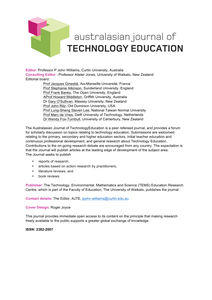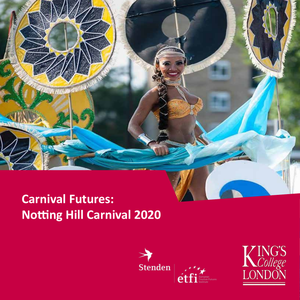Extended Reality technologies, such as Virtual Reality and Augmented Reality (AR), have been increasingly used in the domains of leisure and events. The rapid integration of these technologies raises questions on their use for enhancing staged performances. In this study, employing a between-participants experimental design, we measured the impact of AR on the experience of watching a live dance performance at a staged performance venue, and its recorded version viewed in a home-like environment. Two professional dancers choreographed and performed a 9-minute contemporary dance piece, which was subsequently augmented with computer-generated AR content. We measured participants’ emotions using physiological (skin conductance) signals, and self-reports assessing overall evaluation and willingness to recommend the performance. Results indicate that the live performance was experienced more positively than the at-home experience, regardless of AR. Physiological data showed a subtle yet positive impact of AR on participants’ emotional engagement during the live performances, but not in the at-home setting. Surprisingly, self-report data revealed that watching the performance without AR was evaluated more positively than watching it with AR. This study suggests that AR has the potential to positively impact staged performance experiences, but only when its content is coherently integrated with the performance.
LINK
For German-speaking tourists, an Oriental market (in Arabic: souq) is an exotic place representing the ‘Otherness’. Referring to this Oriental context, the article aims to answer the following questions: What are the tourists’ imaginaries and social narratives and what is the role that cultural brokers play? Gaining insight into the imaginaries and on-site performances of German-speaking tourists of a mega-cruise liner will contribute to the discussion of imaginaries and embodied performances in general as well as the mediation and the construction of space. The research reported upon in the article is part of a larger field study (2012–2014) in Souq Muttrah, the oldest and formerly main market in Oman. Participant observation, photography and in-depth interviews with different types of tourists, local customers, cultural brokers and on-board employees were conducted and marketing material was analysed. Results indicate that in the marketing material, the tourists are already beginning to travel backwards in time. During their visit to the souq, the multi-sensory performances and embodied imaginaries are enhanced by stories of the Arabian Nights. Cultural brokers play an essential role in ‘localizing’ the tourist experience. They adjust their own identities and direct the tourists’ performances at different stages, similar to an Oriental theme park, for example, they stop at a frankincense shop.
DOCUMENT

This paper examines the (collective) performance of identities in an event context. During events, the participants not only engage in face-to-face performances, but also in the collective performances of crowds and audiences. This study analyses collective performance using Collins’ framework of Interaction Ritual Chains, which combines Goffman’s performance metaphor with Durkheim’s work on rituals and collective effervescence. This provides a more complete analysis of the ways identities are performed and (re)constructed during an event. This qualitative study presents the case of the Redhead Days, the world’s largest gathering of redheads. Visitor interviews and participant observation over four editions of the event show how a temporary majority of redheads is created, which greatly impacts both face-to-face and collective performance. Social practices that facilitate performance include photographing and storytelling. The data reveal that collective performance is inherently different from face-to-face performance, and that the combination of the two contributes to a change in narrative identities of the event attendees
DOCUMENT

Many visitor studies make social background variables the central point of departure to explain participation patterns. How the past is 'staged', however, also has an influence on those to whom it appeals. This relational perspective calls for new conceptual tools to grasp empirical reality. Inspired by the historical philosophy of Georg Simmel and the literary theory of Mikhail Bakhtin a number of concepts which enable us to grasp the subtle relationship between museum presentations and visitors are presented. Bakhtin's notion of chronotopy serves as a key concept. By linking museum presentations and visitor perceptions with each other, it is also possible to identify certain tendencies within the contemporary museum landscape.
DOCUMENT
During the medieval and early modern periods, the mock sermon was one of the most widely staged festive rituals. There are records of its performance in most European countries and cultures. But despite its clear popularity in England, few of these texts are extant in English. Fewer still have been translated in their entirety. To remedy this situation, we provide here a translation of the sixteenth century Dutch poem Spotsermoen over Sint Niemand. This piece embodies most of the key features of the mock sermon; the text's rhetorical strategies, its content, and the details it reveals about its performance are all typical of the genre. Thus, the poem is offered as a specimen of the mock sermon's overall conventions and forms.
DOCUMENT

Waarom gaan mensen naar festivals? Hoe beleven ze een festival? Waarom komen ze wel of niet terug? Hoe kunnen festivalorganisatoren de motivatie en beleving van bezoekers effectief beïnvloeden? Wat betekenen sociale media voor de festivalbeleving? Antwoorden op deze vragen helpen festivalorganisatoren een uniek festival aan te bieden en effectiever resultaten te behalen en overtuigender te rapporteren naar subsidieverstrekkers en sponsors. Het Crossmedialab, onderdeel van het Kenniscentrum Communicatie & Journalistiek van de Hogeschool Utrecht, heeft onderzoek uitgevoerd naar festivalbeleving. Dit cahier geeft een overzicht van onder zochte theorieën en bevat een integraal overzicht van factoren die van invloed zijn op de festivalbeleving. Nieuwe inzichten en het uniek ontwikkelde model van festivalbeleving biedt onderzoekers, eventprofessionals en vakdocenten kansen voor verder onderzoek en praktische toepassing.
DOCUMENT

In recent years, a step change has been seen in the rate of adoption of Industry 4.0 technologies by manufacturers and industrial organizations alike. This article discusses the current state of the art in the adoption of Industry 4.0 technologies within the construction industry. Increasing complexity in onsite construction projects coupled with the need for higher productivity is leading to increased interest in the potential use of Industry 4.0 technologies. This article discusses the relevance of the following key Industry 4.0 technologies to construction: data analytics and artificial intelligence, robotics and automation, building information management, sensors and wearables, digital twin, and industrial connectivity. Industrial connectivity is a key aspect as it ensures that all Industry 4.0 technologies are interconnected allowing the full benefits to be realized. This article also presents a research agenda for the adoption of Industry 4.0 technologies within the construction sector, a three-phase use of intelligent assets from the point of manufacture up to after build, and a four-staged R&D process for the implementation of smart wearables in a digital enhanced construction site.
DOCUMENT

Learning by Design (LBD) is a project-based inquiry approach for interdisciplinary teaching that uses design contexts to learn skills and conceptual knowledge. Research around the year 2000 showed that LBD students achieved high skill performances but disappointing conceptual learning gains. A series of exploratory studies, previous to the study in this paper, indicated how to enhance concept learning. Small-scale tested modifications, based on explicit teaching and scaffolding, were promising and revealed improved conceptual learning gains. The pretest-posttest design study discussed in this paper confirms this improvement quantitatively by comparing the conceptual learning gains for students exposed to the modified approach (n = 110) and traditional approach (n = 77). Further modifications, which resulted in a remodified approach tested with 127 students, show a further improvement through reduced fragmentation of the task and addressed science. Overall, the remodified approach (FITS model: Focus - Investigation - Technological design - Synergy) enriches technology education by stimulating an empirical and conceptual way of creating design solutions.
DOCUMENT

In the past two years [2010-2012] we have done research on the visitor experience of music festivals. We conducted several surveys asking festival visitors for demographic variables, taste in music, their motivation for visiting festivals, mentalities and the evaluation of the festival. We also asked for the use of social media before, after and during the festival. Results show that visitors using social media have a significantly different festival experience from users that do not use social media before, during or after the festival. Results on difference in festival satisfaction are mixed.
DOCUMENT
Carnival Futures: Notting Hill Carnival 2020 is a King’s Cultural Institute project led by Nicole Ferdinand (Culture, Media and Creative Industries at King’s College London) which sought to engage cultural organisations and other stakeholders in planning for the future of the Notting Hill Carnival. The content of this report is intended as a contribution to current research and to identifying future directions for the development of the Notting Hill Carnival. The material and views expressed are produced by various stakeholders in a series of workshops.
DOCUMENT
